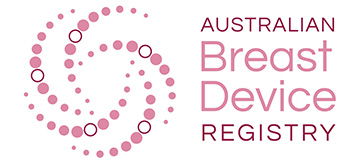Breast device benchmark for better healthcare
August 10, 2017
Breast device benchmark for better healthcare
ABDR research fellow Dr Husna Begum and her small team are for the first time, combining scientific research and clinical expertise to identify one of the most important and unanswered questions in breast implant surgery: what is best practice?
Their ground breaking work takes a scientific-based approach to identify, measure and account for variations of quality of care and the impact of that care on health outcomes, including rates of complications.
Since the introduction of silicone breast implants about 55 years ago, millions of people around the world have had breast implants for augmentation or breast reconstruction, and the number grows daily. To date, there have been no validated quality indicators that reliably measure quality of care for patients.
The Australian Breast Device Registry (ABDR) is a leading breast implant registry, currently with around 20,000 surgeries on file. Around 1,000 new patients are contributing to the registry every month.

From left: ABDR’s Dr Husna Begum, Swarna Vishwanath and Michelle Merenda are working with clinical experts to develop scientifically-based quality indicators in breast device surgery.
Husna (left) takes time out to explain the process of developing quality indicators for breast device surgery.
What is a Quality Indicator (QI)?
A quality indicator is a measure of quality of care. It can help to think of quality indicators as a type of ‘yardstick’ of measures that link data with patient health outcomes. For instance, in the context of breast device surgery, we might want to know whether topical antibiotics reduce the rates of revision surgery for infections. Use of topical antibiotics during surgery would therefore be an indicator of the quality of the surgery (the ‘quality indicator’).
QIs are designed to help identify best practice and provide recommendations for procedures associated with better patient health outcomes.
Why are QIs important to the ABDR?
Quality Indicators are very important in clinical healthcare settings. They establish consistency in the provision of healthcare services, help with early detection of potential problems associated with a device and offer improved well-being for all patients who undergo breast device surgery, whether for reconstructive or cosmetic purposes.
The ABDR collects data about breast device surgeries – including implants, tissue expanders and dermal cell matrices. We are working to identify quality indicators that benchmark quality of care in Australia, including trends of concern about patient health and device safety. Without quality indicators we fail to understand markers of underperforming devices and inconsistent health care, which ultimately affects patient safety. QIs are an evolving field of research, increasingly recognised as a valid and reliable foundation for a strategy to improve care.
What is involved in setting up a QI?
We use a modified Delphi procedure (a panel of international experts in the field of breast device surgery) to identify which indicators are important measures of the quality of breast device surgery. QIs are an evolving field of research, and are increasingly recognised as a valid and reliable foundation for a strategy to improve care.
We took a rigorous academic approach and through a comprehensive literature review, identified current knowledge on 11 clinical quality indicators. To find literature that currently exists around those 11 quality indicators, we searched three databases, reviewed close to 3000 abstracts and read 143 papers in their entirety. We also read regulatory articles from the US, UK, Australia and Europe.
We found there were many sources of information for each clinical quality indicator, however the disparity in the evidence for some indicators was wide. Clinical input from our experts has been paramount to this process. The literature review took four months and was supported by an international panel of clinical experts.
Who was invited on Delphi panel and why?
Seventeen (17) international panellists have formed the Delphi panel, with representation across Australia, Sweden and the Netherlands. A consumer representative, policy advisor from the TGA (Therapeutic Goods Administration), a senior nurse, and a statistician were also included as part of the Delphi process. Panellists were carefully selected for their expertise and knowledge of breast device surgery and to represent all craft groups including plastic and reconstruction surgeons, cosmetic surgeons and general breast surgeons.
How do panellists give feedback?
Our Delphi survey is designed such that all panellists can provide comments/feedback/suggestions for each clinical indicator listed. We then compile feedback for discussion during the following teleconference. Feedback remains anonymous during the discussion sessions.
When did you start the QI work and when is it likely to be finished?
The project was first formulated in January 2017. To date we have successfully completed Round 1 of the Delphi process and expect to complete the Round 2 teleconference later this month. We hope to complete the process later this year. After that, comment will be sought from various stakeholders, and the quality indicators will be incorporated into the data analysis and subsequent reporting.
Because we are breaking new ground, developing quality indicators has been a challenge for us and the Delphi panel at times, but we all know the results will be worth the effort.

